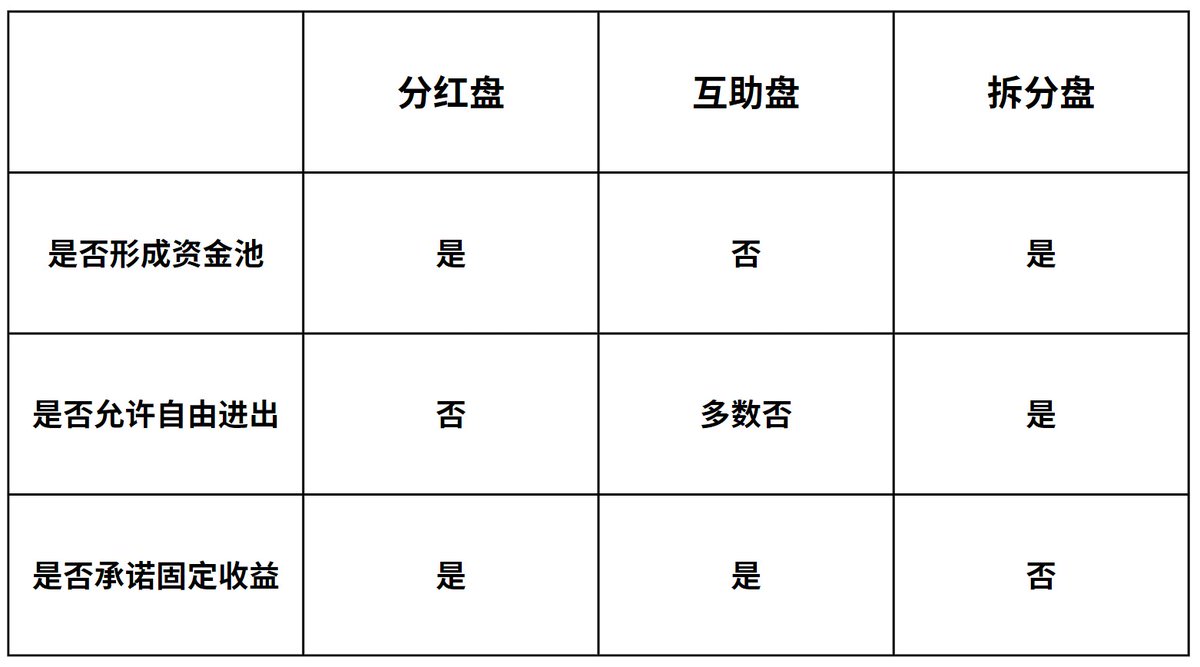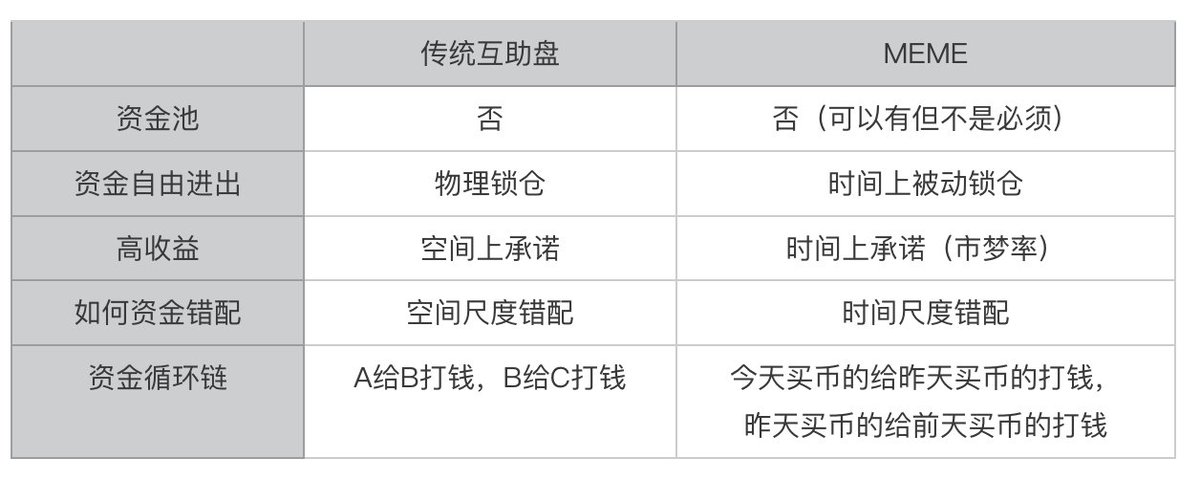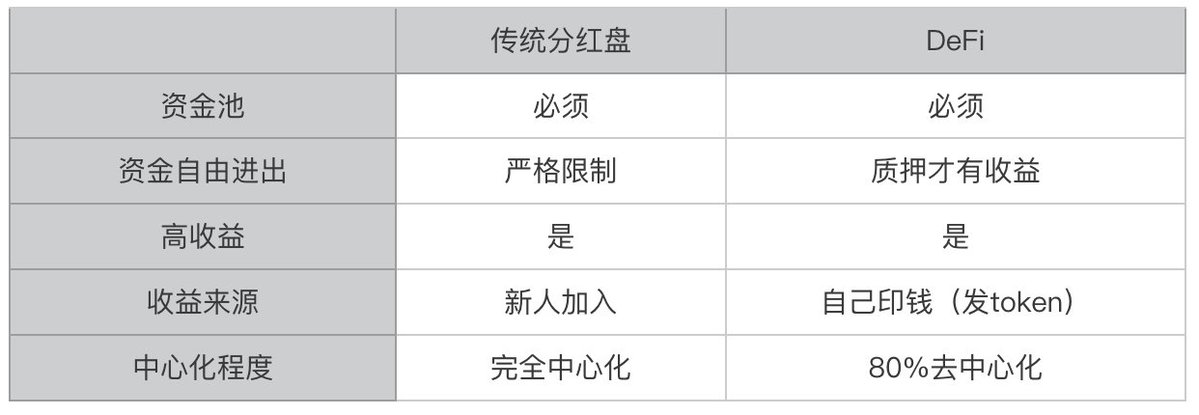The rise of MEME coin from the perspective of Ponzi's three-plate theory
Original author: CaptainZ (X: @hiCaptainZ )
The Three-Disk Theory is a cognitive model about Ponzi schemes proposed by Crypto Vedo . This article explores the reasons for the three bull markets based on this theory: MEME coin is a mutual aid disk, DeFi is a dividend disk, and ICO is a split disk.
What is the Three Plate Theory?
Crypto Vedo believes that one of the greatest values of Crypto is that it has made Ponzi schemes democratized and tradable for the first time.
Everyone can issue and trade. Regardless of external factors, each bull market in Crypto is driven by Ponzi’s fundamental innovation. By studying Ponzi, you can find the big trend level Alpha in the market based on the first principle required by Ponzi’s innovation.
Although there are many Ponzi schemes, in the final analysis, there are only three models: dividend scheme, mutual assistance scheme, and split scheme. All Ponzi schemes are a combination of these three models. Based on this logical analysis method, he called it the "Three-Scheme Model". The three schemes can appear alone or in combination, each with its own advantages and disadvantages, corresponding to the corresponding logic of starting, operating, and crashing.
- Dividend-sharing : Invest a whole sum of money at once and earn profits through linear dividends over time;
- Mutual assistance : A transfers money to B, B transfers money to C, and C transfers money to A, thus forming a mismatch in transaction flow, and the income is settled on a transaction basis;
- Split : continuously split an asset into new assets. Attract incremental funds through new low-priced assets. Profits are realized through the appreciation of the assets.
In terms of logic design, the three disk features are as follows:

MEME is a mutual aid platform
The core of traditional mutual aid is the mismatch of funds. This model usually involves multiple participants transferring money to each other in sequence, forming a capital cycle. Generally speaking, a user receives more money from the next party than he gives to the previous party, thus earning more money than their original investment. The project party generally earns returns by taking a cut of each transfer.
This Ponzi model is the most decentralized of the three models because once the rules are established, there is no need for "management" intervention, because pumping water is essentially taxation.
Traditional mutual aid is a kind of capital mismatch on a spatial scale, so it does not need to form a capital pool, and most of the funds cannot be freely transferred in and out, but it must promise high returns. So why is MEME coin a mutual aid?
We generally believe that MEME coins have two most important properties:
Fair launch : everyone can participate (everyone can help each other);
Full circulation : no need for project party to reserve;
The so-called "cultural attributes" and "large total amount" are not necessary.
MEME coins are actually a kind of capital mismatch on a time scale. Let's assume that in a bull market context, a certain MEME coin has been rising strongly. In fact, those who bought the coin at a high price today pay those who bought it yesterday, and those who bought it yesterday pay those who bought it at the lowest price the day before yesterday. And because of the uniqueness of time itself, "passive lock-up" is formed (people cannot always step into the same river). So we have the following comparison:

DeFi is a dividend-sharing platform
DeFi is the core narrative of the last bull market (2020). Technically, it is to write financial rules into smart contracts (a way to combine blockchain technology and a certain field). From the perspective of token economics, it distributes protocol tokens in the form of liquidity mining: deposit money into the protocol to obtain tokens.
For example, the two most important aspects of the financial sector are trading and lending, so there are Uniswap and Compound. In Uniswap, users deposit token A and token B into a trading pair LP into a fund pool to earn income. In Compound, users need to deposit tokens that can be borrowed into a fund pool to earn income. Most of the income is in the form of protocol tokens, and a small amount is real money (stablecoins).
DeFi is a typical dividend-sharing platform, because the basic logic of the dividend-sharing platform is "invest a whole sum of money at one time, and get linear dividends over time to gain income", isn't it exactly the same as the above approach? We also have the following comparison:

ICO is a split
ICO was the core narrative of the last bull market (2017). The general way of playing was to write a white paper about an idea in any field, and then raise funds to issue tokens. As a result, most people mistakenly believed that the only application scenario of blockchain was "issuing tokens" (another way to combine blockchain technology with a certain field). Therefore, in that cycle, many strange tokens appeared, such as "issuing tokens for environmental protection", "issuing tokens for computers", "issuing tokens for charity", and so on.
We know that splitting is to continuously split an asset into new targets. Incremental funds are attracted through new low-priced targets. The income is realized through the appreciation of the target. Isn’t this the performance of ICO? If we regard the cryptocurrency track at that time as a capital plate, the emergence of various ICOs is to continuously split the asset target of cryptocurrency into new investment targets (new ICO tokens) through "new stories" to attract incremental funds. So we still have a comparison chart:

The coin circle is the trading circle
If we ignore the specific technological evolution and only look at it from the perspective of token economics, it seems that the past decade has indeed represented the evolution of the Ponzi model. We can even regard Bitcoin mining as a dividend distribution (staking mining machines to generate BTC income).
Is the order of evolution: dividend plate (BTC mining) - split plate (ICO) - dividend plate (DeFi) - mutual aid plate (MEME)? At the same time, the project is becoming more and more decentralized.
On the other hand, if we view MEME as a track, the emergence of more and more MEME coins is actually a reflection of the split-up process. Therefore, we can consider MEME to be a combination of (mutual aid + split-up process).
Mutual aid may be the real answer to the “no mutual support” in this bull market (Restaking is a dividend-sharing platform, DePin is a dividend-sharing platform, and Layer 2 is a split platform. Obviously, retail investors only want to play mutual aid in this bull market).


![Axe Compute [NASDAQ: AGPU] completes corporate restructuring (formerly POAI), and Aethir, an enterprise-grade decentralized GPU computing power, officially enters the mainstream market.](https://oss.odaily.top/image/2025/12/12/ff08e068a361495da15f80b89405441e.jpeg)
